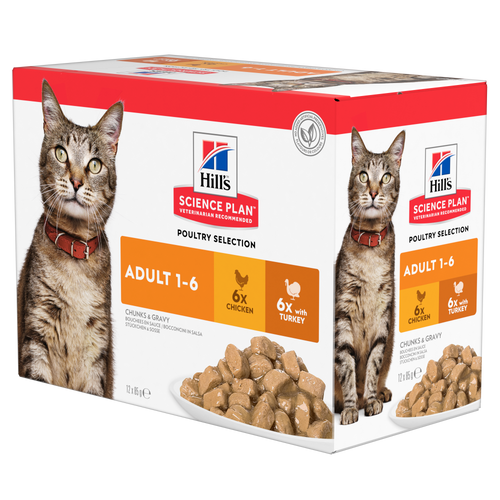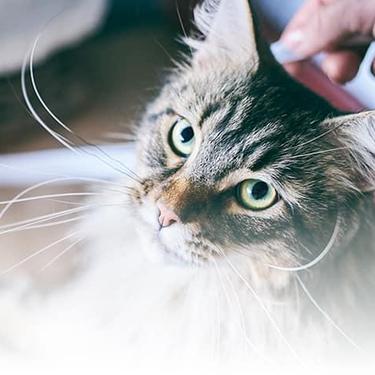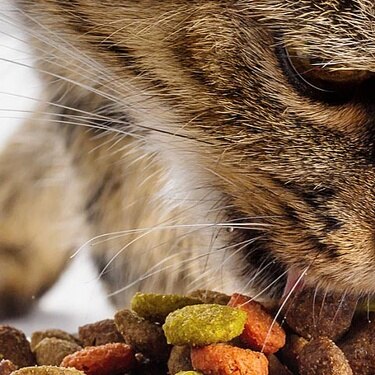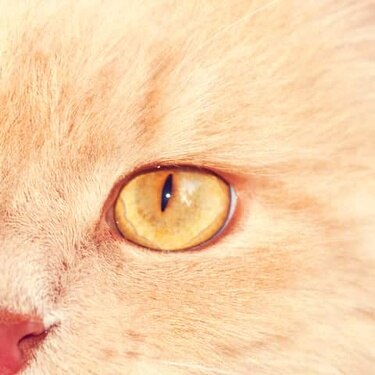
-
Find the right food for your petTake this quiz to see which food may be the best for your furry friend.Find the right food for your petTake this quiz to see which food may be the best for your furry friend.Featured products
 Adult Wet Dog Food with Beef
Adult Wet Dog Food with BeefHill's Science Plan Adult Multipack Wet Dog Food with Chicken, Beef & Turkey are complete premium pet foods for adult dogs from 1 year. Your dog will love these deliciously smooth and savoury minced loaves, formulated for balanced nutrition and overall health.
Shop Now Puppy Food
Puppy FoodHill's Science Plan Puppy Multipack Wet Dog Food with Chicken & Beef are complete premium pet foods for growing puppies from weaning until 1 year old and for pregnant and nursing dogs. Your puppy will love these deliciously smooth and savoury minced loaves, formulated for balanced nutrition and overall health.
Shop Now Mature Adult Dog Food
Mature Adult Dog FoodHill's Science Plan Mature Adult Multipack Wet Dog Food with Chicken & Beef are complete premium pet foods for mature adult dogs from 7 years. Your dog will love these deliciously smooth and savoury minced loaves, formulated to deliver the appropriate amount of energy to support the needs of adult dogs.
Shop NowFeatured products Light Adult Multipack Wet Cat Food with Chicken & Ocean Fish
Light Adult Multipack Wet Cat Food with Chicken & Ocean FishTender chicken chunks in gravy for cats, with L-carnitine and fewer calories for ideal weight management. Packed with high-quality protein, omega-6s, and vitamin E for shiny fur and healthy skin.
Shop Now Mature Adult Wet Cat Food with Chicken
Mature Adult Wet Cat Food with Chicken
Tender chicken chunks in gravy for mature adult cats. Made with easy-to-digest ingredients, high-quality protein for lean muscle maintenance and antioxidant vitamins C+E for optimal health.
Shop Now Adult Multipack Wet Cat Food with Beef, Ocean Fish & Chicken
Adult Multipack Wet Cat Food with Beef, Ocean Fish & ChickenTender chunks in gravy for cats, with high-quality protein to maintain lean muscle. With vitamin E and omega-3s & -6s for healthy skin and balanced minerals to support healthy vital organs.
Shop Now -
Dog
- Dog Tips & Articles
-
Health Category
- Weight
- Food & Environmental Sensitivities
- Urinary
- Digestive
- Joint
- Kidney
-
Life Stage
- Puppy Nutrition
- Adult Nutrition
- Senior Nutrition
Cat- Cat Tips & Articles
-
Health Category
- Weight
- Skin & Food Sensitivities
- Urinary
- Digestive
- Kidney
-
Life Stage
- Kitten Nutrition
- Adult Nutrition
Featured articles Show some love with wet foods: a great choice for pets with health issues
Show some love with wet foods: a great choice for pets with health issuesShow some love with wet foods: a great choice for pets with health issues.
Read More The Right Diet For Your Pet
The Right Diet For Your PetIn people, the right diet is very important. If you are eating the wrong way for your metabolism, activity level, age and lifestyle you could end up with health issues.
Read More The Incredible Science Behind Your Pet's Microbiome
The Incredible Science Behind Your Pet's MicrobiomeLearn what your pet's microbiome is, how it contributes to your pet's gut and overall health, and why nutrition is important in maintaining healthy microbiomes.
Read More -


One of the most common disorders in middle-aged and older cats is hyperthyroidism, or an overactive thyroid. The thyroid is a gland that sits in the neck in front of the windpipe. It controls the cat’s rate of metabolism, or how fast their body produces energy. Imagine it as the body’s thermostat, turning up the heat when needed.
With hyperthyroidism, the thyroid speeds up the metabolism even though the cat’s body doesn’t need any extra energy. To use the thermostat analogy, it’s like your thermostat cranking up the heat on a sunny July day!
When this happens, your cat’s body goes into overdrive. The most common signs of this are restlessness, excessive hunger, weight loss despite eating all the time and, in some cases, aggression. Cats with hyperthyroidism often also look unkempt, with a coat that is in poor condition.
Great quality nutrition is important for lifelong good health, but it is even more important when it comes to cats with hyperthyroidism. This is because:
They may struggle to stay at a healthy weight and maintain muscle mass. To get the maximum nutrition from every bite, their food needs to be highly digestible and made with the best quality ingredients.
They are usually older cats. Middle-aged and older cats tend to have other health issues, such as kidney disease, so their food may need to have controlled levels of protein, minerals and other nutrients to accommodate this. The protein in their food should also come from very high-quality sources.
Ensure that you are feeding a high-quality, complete and balanced food that is suitable for the lifestage of your cat. If your cat has other health issues as well, your vet may recommend a dietetic food to help with the other medical issues. Bear in mind that your hyperthyroid cat will need to eat a higher ration than normal, and almost certainly more than the feeding guide says for their weight. You may be able to feed ad lib if your cat is hungry all the time but losing weight. Alternatively, you can give 4-6 meals a day to ensure they are getting enough to eat. Timer feeders are very useful for this if you are out and about for long periods of time.


Tasty Tips
Food as a treatment option for cat hyperthyroidism
Cats with an overactive thyroid gland are at risk of malnourishment, high blood pressure, retinal damage and organ damage, such as heart disease, so you should always try to control the problem. There are several treatment options available, including medication, surgery, radioactive iodine and a special dietetic food - all with their own pros and cons.
You may be surprised to see that food is a treatment option, but there is a specific dietetic food to control hyperthyroidism. As well as being highly digestible, complete and balanced, it contains reduced levels of iodine. The thyroid gland needs iodine to function, so lowering the levels can slow down the overproduction of the thyroid hormone, resolving your cat’s symptoms after a few weeks. However, the food doesn’t fix the underlying thyroid problem, so your cat will need to stay on the food for life. Your vet can discuss the options and help you to choose the best one for your cat’s lifestyle, their other medical conditions, and your finances.
In summary
If your cat has been diagnosed with hyperthyroidism, ask your vet about treatment options and whether the food your cat is currently on is ideal. Don’t forget to increase their rations until their weight is stabilised and the thyroid is under control. Consider food as a treatment option and ask your vet about dietetic food if you feel it would be a good fit for your cat. Please remember, though, that you should never change your cat to a dietetic diet without discussing it with your vet first.
Reviewed by Dr. Hein Meyer, DVM, PhD, Dipl-ECVIM-CA


One of our staff authors prepared this article for you
Related products

Tender chicken chunks in gravy for mature adult cats. Made with easy-to-digest ingredients, high-quality protein for lean muscle maintenance and antioxidant vitamins C+E for optimal health.


Tender chunks in gravy for cats, with high-quality protein to maintain lean muscle. With vitamin E and omega-3s & -6s for healthy skin and balanced minerals to support healthy vital organs.

Tender chicken chunks in gravy for cats, with L-carnitine and fewer calories for ideal weight management. Packed with high-quality protein, omega-6s, and vitamin E for shiny fur and healthy skin.
Related articles

Learn how to make homemade cat treats that are healthy for your pet with this recipe from Hills Pet Nutrition.

From essential vitamins & minerals to different types of meat, learn what to look for when choosing the best cat food for your feline.

Chocolate is known to be poisonous for dogs, but it can also be toxic for cats. Learn why chocolate is bad for cats & what to do if she's eaten it.

There are three common ways to feed a cat. Each way has its advantages and disadvantages.

Put your cat on a diet without them knowing
Our low calorie formula helps you control your cat's weight. It's packed with high-quality protein for building lean muscles, and made with purposeful ingredients for a flavourful, nutritious meal. Clinically proven antioxidants, Vitamin C+E, help promote a healthy immune system.
Put your cat on a diet without them knowing
Our low calorie formula helps you control your cat's weight. It's packed with high-quality protein for building lean muscles, and made with purposeful ingredients for a flavourful, nutritious meal. Clinically proven antioxidants, Vitamin C+E, help promote a healthy immune system.

